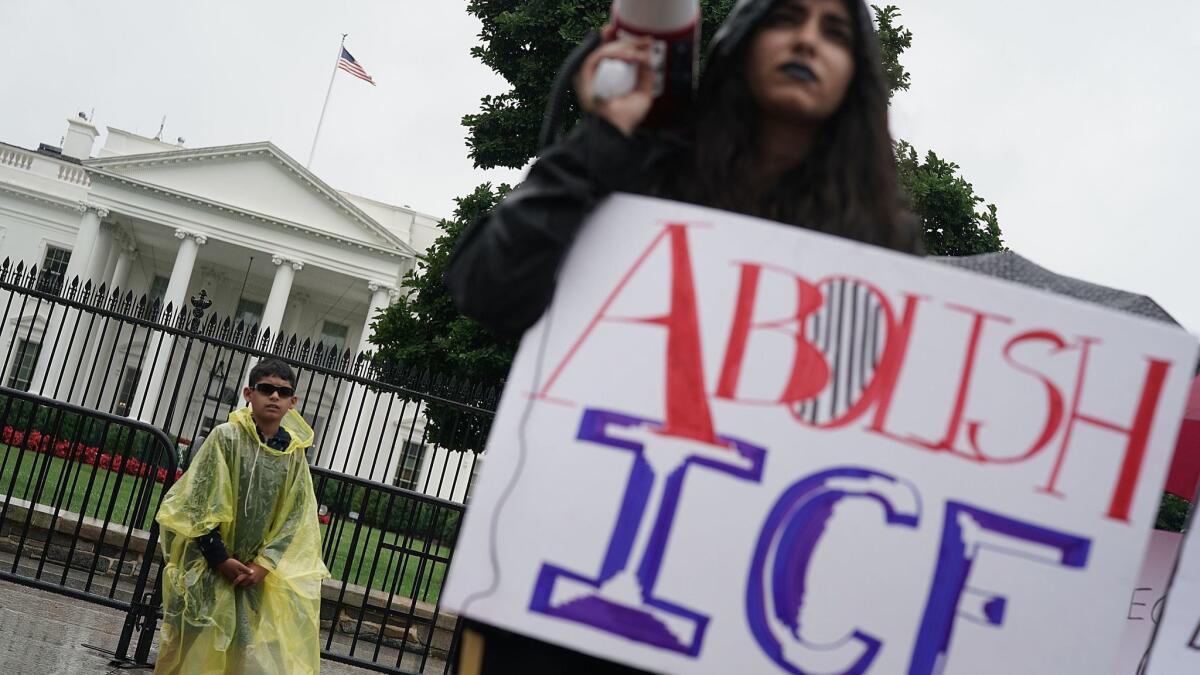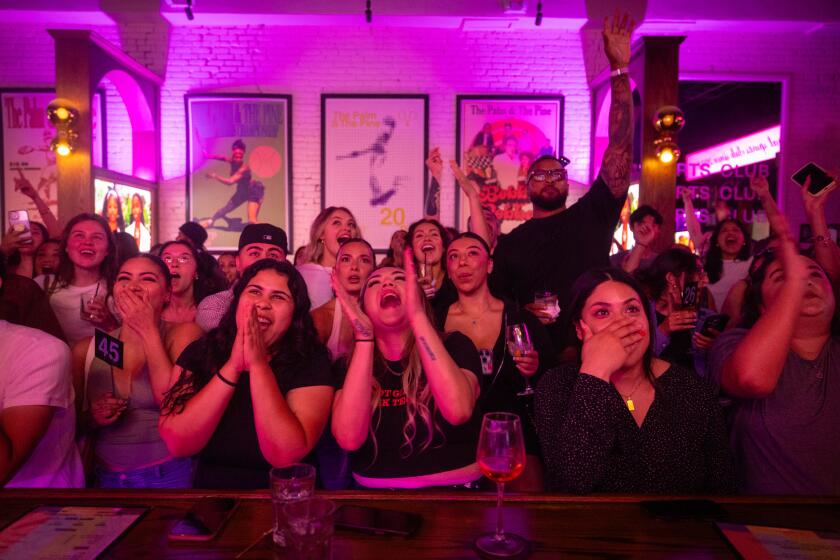Newsletter: Crossing the U.S. border shouldn’t send you to jail

- Share via
Good morning. I’m Paul Thornton, and it is Saturday, June 23, 2018. Let’s take a look back at the week in Opinion.
To some immigrant rights activists, whether to keep families together or remove children from the care of their parents is the wrong debate to have (that isn’t to say the former option is the right one, if these are the only two choices). With the Trump administration first trumpeting its “zero tolerance” policy, then defending it when the reality of family separation became apparent, then insisting it was the Democrats’ problem to fix when a recording of children wailing in desperation went viral, then ending the practice by fiat with the president insisting he had just fixed a problem that no other president in the last 60 years had the political courage to address, it’s easy to forget the bigger question: Why are we incarcerating immigrants at all?
In an op-ed article, attorney and activist Christina Fialho points out that the imprisonment of immigrants requesting to stay in the United States is a relatively new phenomenon — and one driven by private companies that have pushed to jail more border crossers:
The idea of imprisoning immigrants and asylum seekers while they await the outcome of their requests to stay in the United States is a relatively new phenomenon. It wasn’t until 1981 that the Reagan administration opened the McAllen Detention Center on a former U.S. Navy Base in Puerto Rico to detain Haitians. The next year, as Reagan warned of a “tidal wave of refugees” fleeing civil wars in Central America, the administration established its Mass Migration Emergency Plan, requiring that 10,000 immigrant prison beds be ready for use at any given time.
This gave rise to the formation of the world’s first private prison company, Corrections Corp. of America (CCA), which changed its name in 2016 to CoreCivic. CCA/CoreCivic got its first federal government contract for an immigrant prison in Texas in 1983. And the publicly traded corporation has been lobbying to expand our immigrant prison system ever since. In the 1980s, there were anywhere from 30 to 3,000 people being held at a time; today it’s 10 times that, and 73% of them are in facilities operated by private companies.
In 1996, under the Clinton administration, two laws were passed that greatly expanded our civil immigrant prison system. These laws added extensively to the list of crimes that made any non-U.S. citizen, including many legal permanent residents, vulnerable to civil incarceration and deportation. Then the George W. Bush administration launched Operation Streamline, which authorized the criminal prosecution — rather than civil deportation — of those apprehended at the border; that’s the program the Trump administration used to separate families.
So where we are today is the result of three decades of increasingly aggressive policies under both Democratic and Republican leadership.
Worth another read: “Illegal” immigration is a recent invention. An op-ed article published last January makes a point germane to the current debate on family separation: Up until the 1920s, immigrants to the United States typically did not need papers. For most of this nation’s existence, almost anyone could walk off a boat and be lawfully present in the U.S., so when people say their long-ago immigrant ancestors came here “legally,” they’re probably right — because there was no such thing as an “illegal” immigrant. L.A. Times
Melania Trump, crisis actor. No, not the camera-ready kind that gun nuts believe populate school sites after mass shootings, but the friendly face this administration put on its inhumane policy of confiscating immigrant children from their parents. Her efforts at damage control faltered when she was spotting wearing a jacket that contained the message, “I really don't care. Do U?” — her “Let them eat cake” coat must have been at the dry cleaner — and couldn’t hold back the torrent of negative commentary on her husband’s reprehensible behavior. L.A. Times
She was separated from her parents 50 years ago, and she still feels the trauma today. In 1960s Sweden, where op-ed article writer Margareta Larsson was raised, it was against policy for parents to visit their hospitalized children. She writes about her 11-day hospital stay as a toddler: “Upon intake, I was described as a ‘lively and active girl who can say just two words, mama and papa.’ Eleven days later, I merited a description as a ‘markably reserved, distrustful, and anxious’ patient. I also know from my mother that, after my return from the hospital, I suffered from acute separation anxiety.” L.A. Times
Don’t mess with California’s clocks. No one likes the spring forward, fall back ritual that messes with our sleep, creates confusion and — did I mention messes with our sleep? But with the rest of the country save Hawaii and Arizona adhering to the semi-annual ritual, opting California out of daylight saving time would be more trouble than its worth. The state Legislature should hold back on its push to have Californians vote on the matter. Sacramento Bee
Dividing California into three states would create endless water wars. Los Angeles gets much of its water from the Colorado River, but it would be a full state away from its watershed. How would the California Water Project Work? And would the newly created state of Northern California decide the states of California and Southern California are worthy of its groundwater? L.A. Times
Reach me: paul.thornton@latimes.com
Sign up for The Wild
We’ll help you find the best places to hike, bike and run, as well as the perfect silent spots for meditation and yoga.
You may occasionally receive promotional content from the Los Angeles Times.




